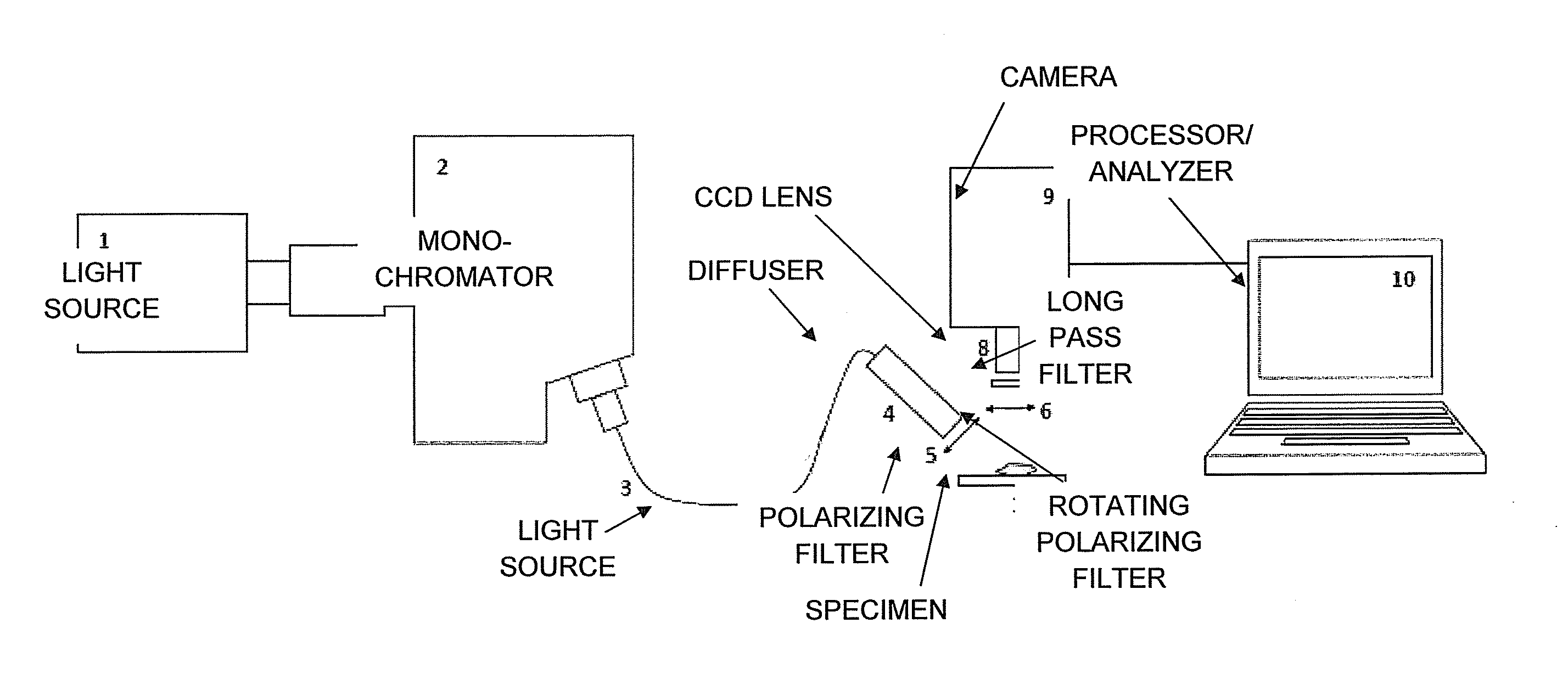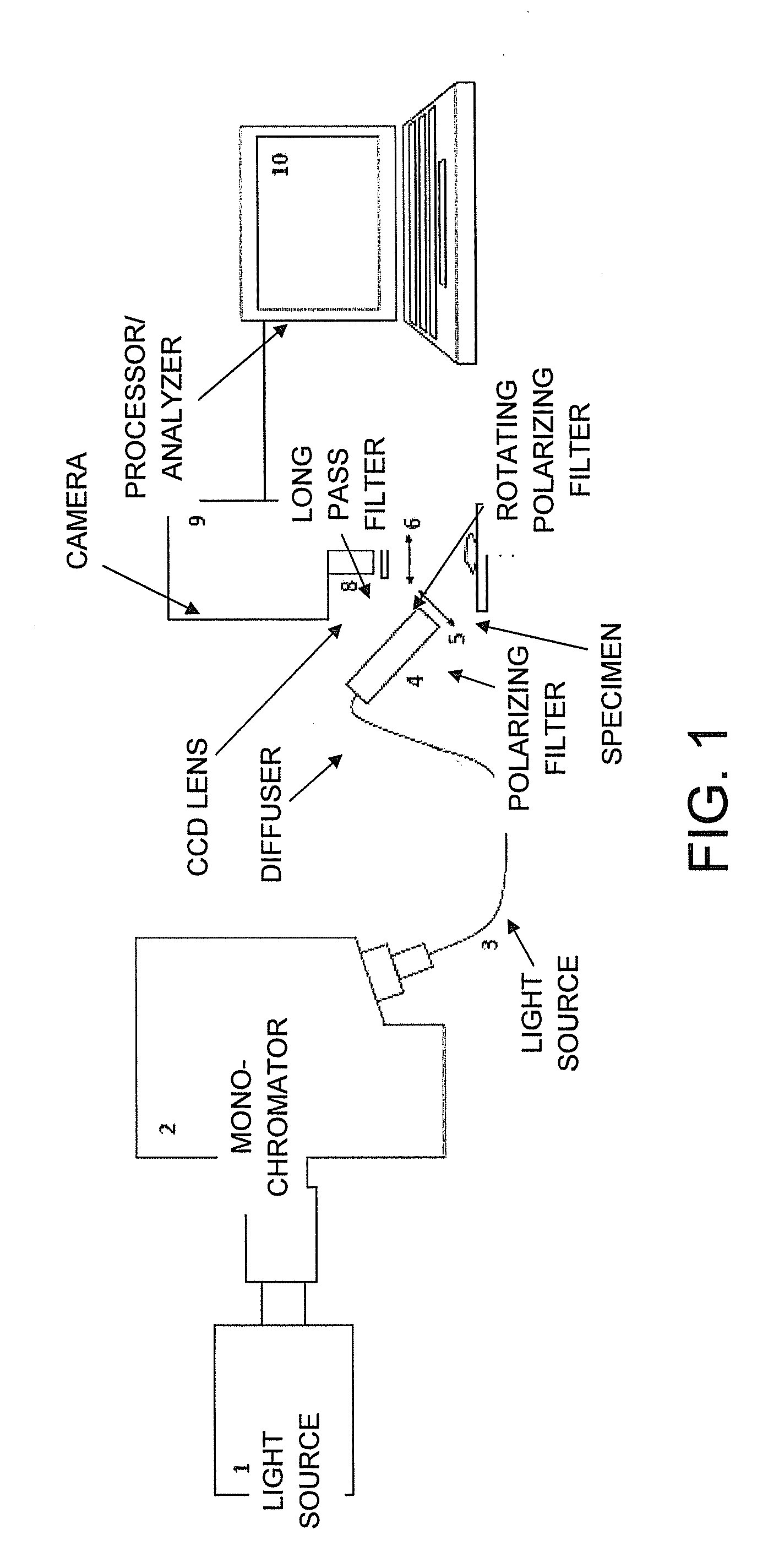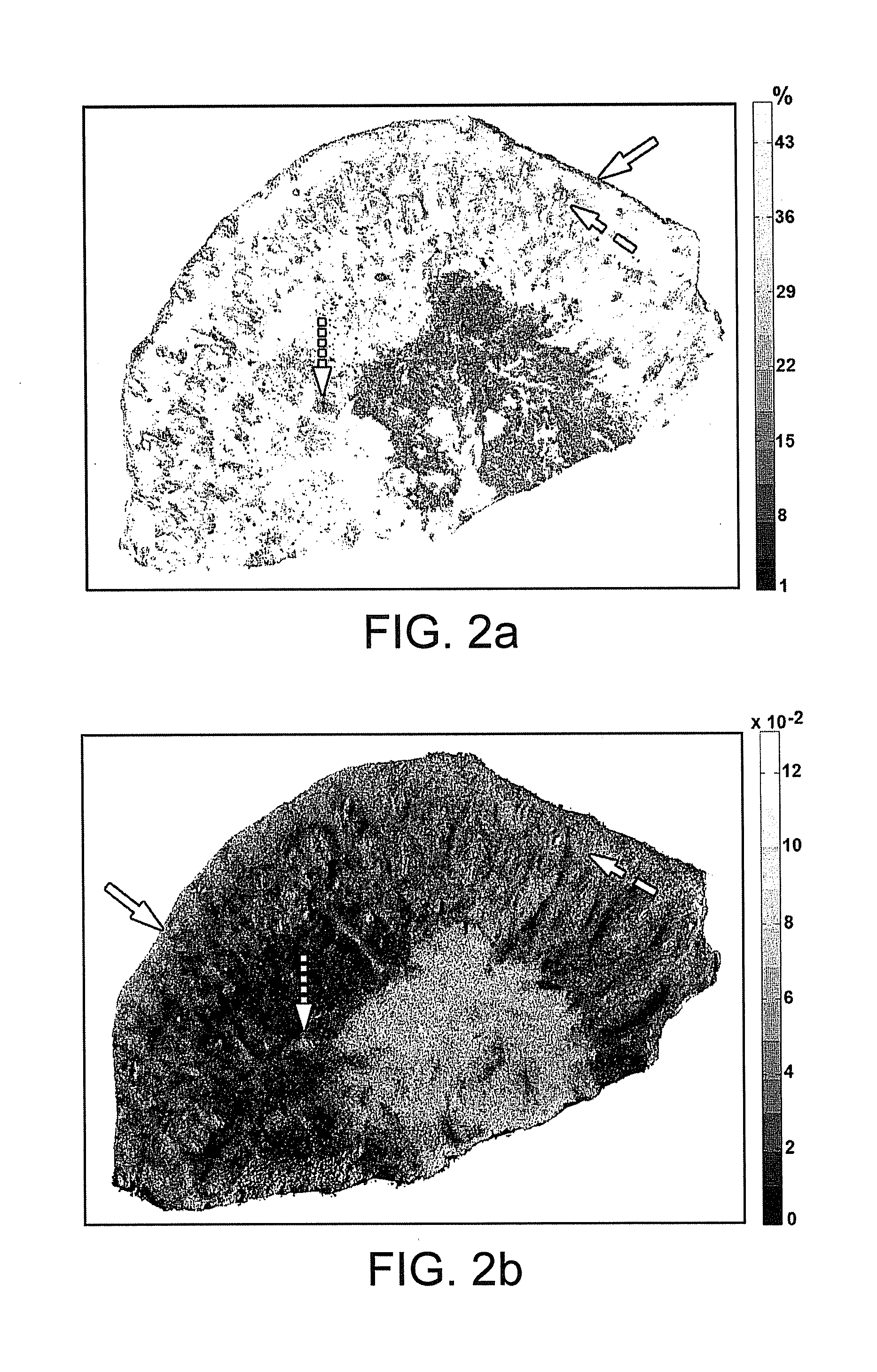Method and apparatus for multimodal imaging of biological tissue
a biological tissue and multimodal imaging technology, applied in the field of biological tissue multimodal imaging, can solve the problems of complicated visual tumor localization and precise excision, high cost of treatment, and time-consuming and labor-intensive procedures, and achieve the effect of facilitating real-time tumor delineation and increasing the number of surgical procedures
- Summary
- Abstract
- Description
- Claims
- Application Information
AI Technical Summary
Benefits of technology
Problems solved by technology
Method used
Image
Examples
Embodiment Construction
[0028]Biological contrast agents, e.g. stains or dyes such as MB, can distribute differently in different types of tissue. Such variations in dye distribution can lead to differences in spectral absorption and other optical properties, which can depend in part on differences in local dye concentrations. Other factors may also affect the observed optical properties, such as local concentration of blood / hemoglobin or other light-absorbing substances in the tissues. In conventional tissue identification techniques, optical properties of dyed tissue measured using a broadband source or a single wavelength can be compared to identify differences in tissue types based on variation in the dye distribution. However, certain distinct tissue types may exhibit similar optical properties in such measurements, which can impair the identification or differentiation of tissue types in a sample.
[0029]Certain optical properties at two or more particular wavelengths can be measured at a plurality of ...
PUM
 Login to View More
Login to View More Abstract
Description
Claims
Application Information
 Login to View More
Login to View More - R&D
- Intellectual Property
- Life Sciences
- Materials
- Tech Scout
- Unparalleled Data Quality
- Higher Quality Content
- 60% Fewer Hallucinations
Browse by: Latest US Patents, China's latest patents, Technical Efficacy Thesaurus, Application Domain, Technology Topic, Popular Technical Reports.
© 2025 PatSnap. All rights reserved.Legal|Privacy policy|Modern Slavery Act Transparency Statement|Sitemap|About US| Contact US: help@patsnap.com



